How Long Should a Cover Letter Be?
A good cover letter adds context to a job application and allows the job seeker to connect with hiring managers. Here's how to get the right length for your letter.
A good cover letter adds context to a job application and allows the job seeker to connect with hiring managers. Here's how to get the right length for your letter.
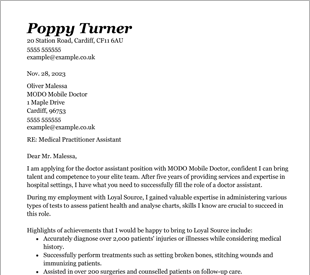
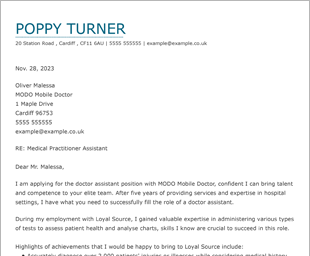
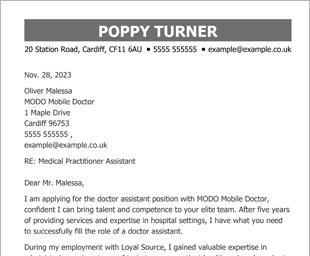
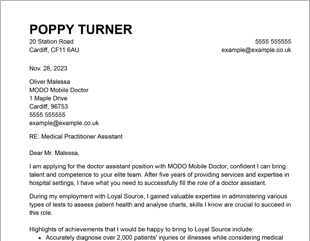
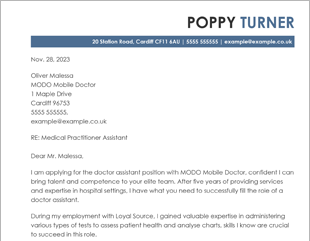
OUR USERS HAVE BEEN HIRED BY
If you want to land a new job, knowing how to write a cover letter is crucial in the competitive job market that exists today. After all, before a hiring manager ever reads your CV, they will be presented with your cover letter. This is why it is important to balance your cover letter length and content for the best possible impact. A well-crafted cover letter that addresses the needs of the job description can leave recruiters excited to read the attached CV. Therefore, writing a good cover letter with the right length will seriously increase your chances of being invited to a job interview.
There is no singular perfect length for a cover letter, but you should aim for between a half-page and one full page. The length of your cover letter is dependent on the requirements of the job advert and how you intend to reference your past achievements and experiences.
The average length for a UK cover letter is between 250 and 400 words, with 300 being an ideal length. If you have a lot of relevant information to include, your cover letter can exceed 400 words, but you should never exceed 500 words or one full page. This translates to between three to six paragraphs.
Writing a cover letter is as much a skill as writing a CV, so one of the most important parts of learning to write an effective cover letter is practice. You can deal with small formatting issues by using an online cover letter builder. Using a cover letter builder will also give you access to a range of professional-looking cover letter templates.
As with any formal correspondence, you should include your full name and contact information with your phone number and professional email address. You can also add your professional social media links, like your LinkedIn profile at the top of your cover letter. Also, write a professional, personalized salutation. Refer to the hiring manager by name, using the “Dear Mr./Mrs./Ms.” greeting format and the hiring manager’s surname. This is better than using a generic salutation, such as “To Whom It May Concern.”
The three main paragraphs of your cover letter should follow this format:
The first paragraph of your cover letter should introduce you as a candidate and provide a hook, like an impressive achievement, that will make recruiters stop to read the full document. For example, if you are writing a teacher cover letter, your first paragraph could be something like this:
“As a teacher with 10 years of experience, I have worked with children from all backgrounds. Favouring a flexible teaching style, I recently oversaw a cross-departmental project between the history and art departments in my current role as an art teacher at St John’s Academy. As a result of this project, five students have indicated that they wish to study the history of arts and culture at university.”
The second paragraph of your cover letter should expand upon the qualifications and skills listed in your CV and reiterate that you are the perfect candidate for the job. Generally, the best way to do this is to discuss your important achievements in previous jobs. Be sure to mention the company name. Draw from your relevant experience to choose examples that act as proof of your relevant skills. For example, when writing a staff nurse cover letter you could include something like:
“In my five years of experience as a staff nurse at Southern General, I took charge of a team of ten nurses and implemented changes to the rota system that resulted in 15% less unexpected absence within the team. I also created a system of hygiene and cleaning that was rolled out to other wards and contributed to an 11% decrease in infection during the initial wave of the pandemic.”
Your third paragraph should tie up loose ends and act as a call to action that makes potential employers want to speak with you further. A strong call to action can make the difference between a short and long job search, so don’t be afraid to be bold! Here’s a good example of a closing paragraph and call to action to consider:
“I firmly believe that I am the right person for this role, and am positive that I can bring value to your team. I am available for an interview between the 3rd and 12th of May and hope to hear from you soon.”
The end of your cover letter should be professional and simple. Standards change over time, but more traditional verbiage is usually the way to play it safe. Try sign-offs such as “Sincerely” or “Best Regards”. Be sure to include your full name!
If you want to make a strong first impression, you should tweak your CV for every single job application. This goes beyond changing the hiring manager’s name and company name. You should tailor the examples and achievements you discuss to suit the needs and parameters of the job description you are applying to.
Yes, you can reference your internship or other unpaid experience, including volunteer work, in your cover letter. You can also include this information in your CV. If you choose to do so, be careful not to simply repeat information from your CV in your cover letter – describe how your experiences can benefit the specific position you’re applying to.
Cover letter formatting is fairly simple. You should treat your letter like any other professional letter. Use a clear, legible font, such as Calibri, Arial, or Verdana, in a font size between 10.5 and 12. You should use a single or 1.5 line spacing and have margins of .5 to 1 inch all-around. Leaving plenty of white space makes your cover letter easier to read. These simple formatting guidelines will ensure that your cover letter looks professional and polished. Find more tips on our cover letter formats page.
We personalize your experience.
We use cookies in our website to ensure we give you the best experience, get to know our users and deliver better marketing. For this purpose, we may share the information collected with third parties. By clicking “Allow cookies” you give us your consent to use all cookies. If you prefer to manage your cookies click on the “Manage cookies” link below.